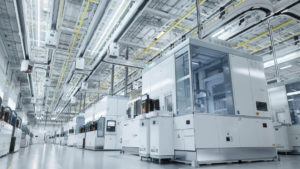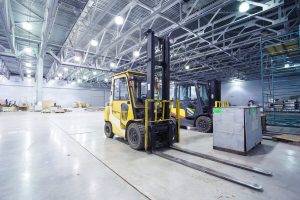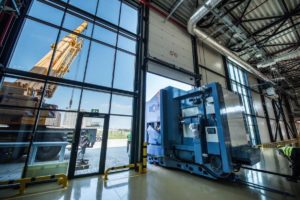The constantly accelerating Polish and European economies continuously add a lot of development dynamics, both in the purely economic and physical aspects. Production plants are evolving and changing in many ways, with new production technologies and organizational solutions emerging. Investors are increasingly deciding to expand existing plants or build entirely new enterprises that meet all the requirements dictated by production technology. This is where the need for efficient and swift relocation arises. Relocating a plant, part of it, or even a single production line during ongoing production is a serious and demanding task. On one side, we aim to change the production location, and on the other side is our ongoing core business and the relationships with customers associated with it. How can we reconcile changing the location by moving the entire production to a new place without disrupting relations with customers? A proper plan for relocation during production is necessary, taking into account not only the object of relocation itself but also the current production-related aspects.

The first element of the plan is choosing the optimal method of action, which is primarily determined by the relocation time and, relative to this time, its cost – relocation conducted at a high pace is definitely more expensive. This cost can be minimized, but there are questions that need to be answered at the outset:
- How long can we afford to stop a given process/machine?
- Are we able to produce reserves? How will this affect the available realization time?
- Is it possible to prepare a so-called backup process (perhaps with lower efficiency but securing the minimum needs)?
- How quickly after stopping the process/equipment can relocation activities begin?
- Virtual Shutdown Tester – we stop the line/equipment for period X and identify all risks and their consequences.
- Is the relocation in terms of organizational-process and layout a 1:1 copy of the previous situation? If NOT, what is the scale of the changes?
- Are there any additional actions planned during the relocation that could affect the realization time?
The second element is the proper preparation of the new location and the final placement of the equipment. Here, special attention should be paid to:
- Preparing a complete technological layout of the new area.
- Physically marking the places for the actual placement of the equipment (especially the key ones) and communication routes. Special attention should be given to possible collisions of elements operating outside the physical outline of the equipment (a common mistake of designers and layout creators), such as conveyors, robot manipulators, etc.
- Preparing the supply media (electricity, liquids, compressed air, etc.) with the highest possible degree of advancement.
The third issue is efficient execution.
- Considering that tasks of this type are high-risk projects, it is suggested to entrust the relocation to specialized units, especially those capable of providing real recommendations in this area. Experienced entities can plan, prepare, and implement the entire process, engaging both their own and the client’s resources. This additionally ensures that nothing is left “at the interface” that could affect the realization pace.
- One of the elements of preliminary preparation of the relocated area is the proper communication to the units servicing the given process/machine. Data concerning the date and even the hour of the start of relocation (so-called break) duration, the planned restart date at the new location, and the data of the persons responsible for the restart are placed on the equipment. Efficient communication reduces the risk level and organizes the organization.
- Experienced contractors can significantly speed up the realization pace by increasing dedicated resources in response to dynamically changing needs or by working in shift mode or even continuously. A well-planned and well-prepared tool and equipment park (specialized for relocation) and a warehouse of installation components will also significantly affect the efficiency of the entire relocation process.
To summarize, relocation during production must be preceded by thorough planning based on time buffer possibilities, risk identification, and implementation tests. This task should involve experienced professionals and, if possible, be entrusted comprehensively to a single responsible contractor. Relocation often involves months of planning and several weeks of physical execution of even the entire plant without production losses.
Monika Górska Director of the Relocation Division


